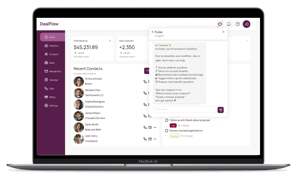Ever tried to plan your work in a rigid four-step box? Yeah, that's why consultants hated Working Sound. Now consultants spend time solving client problems.- not fighting their tools.
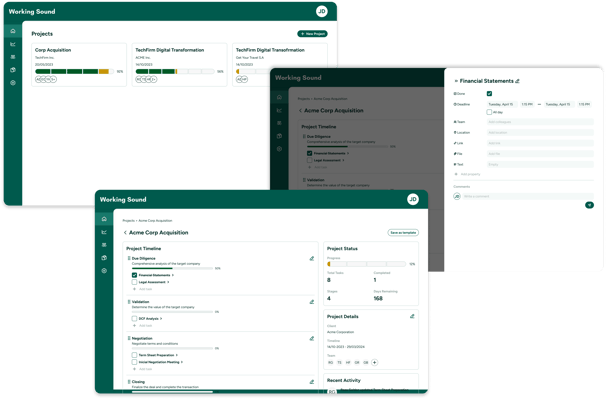


Timeline: 4 months
Working Sound’s rigid four-step workflow worked perfectly— until it didn’t. As consulting firms grew and their needs evolved, the platform’s inflexibility became a daily frustration. Teams were hacking together external tools just to adapt, wasting time and losing trust in the system. The question was: How might we transform a one-size-fits-none framework into a tool that bends to consultants’ actual workflows?

Challenge
Objectives
Redesign the workflow system to allow fully customizable stages (add/reorder/remove) and dynamic tool integration to reduce average project setup time by 30% in the next 4 months.


The wake-up call
We interviewed 4 consulting firms using Working Sound. Their frustration was clear.

Research
What we learned
They Were Leaving.
Projects grew beyond 4 stages.
Needed to attach files, links, forms — not just checklists.
The Competition Had Flaws.
“We’ve started using Asana for client projects because your four-step system can’t handle our 7- stage process.”
“Why can’t we add contracts to tasks? Checklists aren’t enough.”
“Either we evolve, or they’d leave for other tools.”
The stakes

Picture this:
Me on my sixth Figma prototype
Slack pings with conflicting feedback:

Ideation
The Prototype Pile-Up
“Make it flexible!”
“Don’t change too much!”
Our PM’s warning
“Two clients just paused subscriptions...”
We were stuck in design purgatory— until we changed one thing: We stopped “working” and started deciding:
Daily 4 PM “Save the Ship” sessions:
No agendas — Just the prototype on screen.
No “I’ll review later” — Live reactions only.
No maybes — Thumbs up/down before leaving
The result? In 10 days:
Killed 5 bad ideas fast
Landed on a "flexible but familiar" approach
Got our first client thumbs- up.
“This might actually work”

Prototyping
Project Details: From Fixed to Flexible
[Before] → Static fields (half unused)
[After] → Core fields + "Add Property" button
Stage Creation: Debate to Decision
Before] → Useless 4- stage preview
[After] → Blank canvas for stages and tasks
“Clients got what they needed— not what we guessed they’d need.”
Task Freedom
Before] → Endless modal hell
[After] → Drag stages → Add tasks → Custom fields
“We killed the creation process— just start building right away”
“Simplicity made flexible”
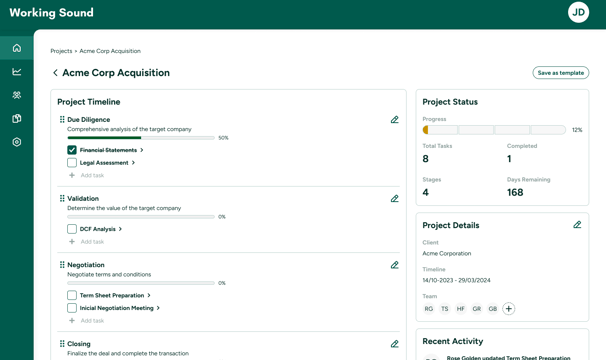

Metrics & Accountability
[New] → Progress bars + activity log "Finally, visibility into who did what— and how close the project is to done
“Finally, visibility into who did what— and how close the project is done”
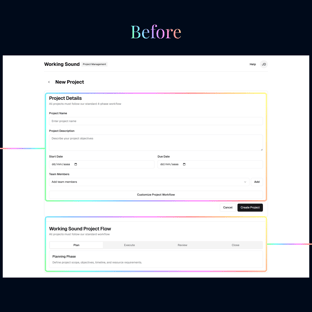
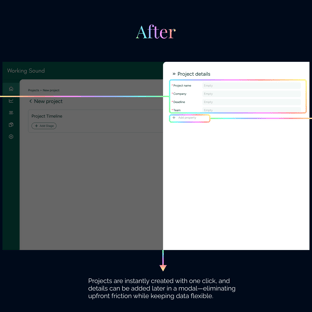
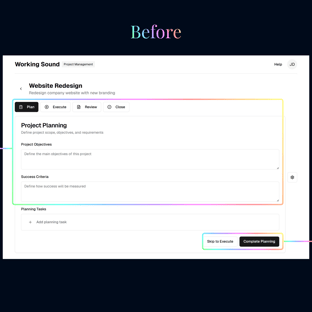
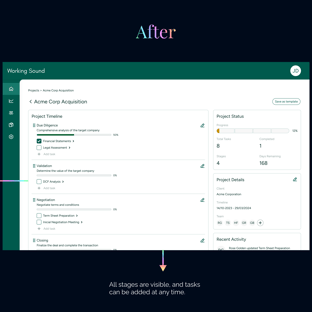


We ran 5 rapid tests with real consultants— and held our breath.
The Verdict?

Testing
"Wait... this actually works like we work."
Only minor tweaks needed (of course, a "Make this button bigger" request). But the core? Nailed it. The Best Part? No endless revisions. We shipped specs to devs that same week.

The Struggle
Consultants were wasting hours every week fighting their tools:
Copy- pasting data between platforms.
Losing critical files in endless email chains.
Missing deadlines because "the system wouldn’t let them" adapt.
The Breakthrough
We redesigned Working Sound to work the way consultants do:
No more workarounds: Clients built workflows that matched their actual process (not the other way around).
No more lost data: Everything lived in one secure place— from contracts to client feedback.
No more blind spots: Real- time progress tracking stopped last- minute fire drills.
The Result
300+ hours saved across teams in the first 3 months 92% adoption rate of the new flexible system.
One client’s email: “This finally feels like a tool built for us.”
What’s Next?
Templates for Common Workflows: Because even custom work has patterns (e.g., M&A due diligence).
Team Analytics To spotlight where workflows still get stuck— and fix them faster.

Conclusions
The Ugly Truths of Shipping Fast
Clients don’t care about your design process: They needed a working solution yesterday. We skipped personas, perfect prototypes, and endless debates.
→ Lesson: Solve the bleeding problem first.
Async work kills urgency: Slack threads and “I’ll review it later” wasted weeks. Daily 30- minute war rooms saved us.
→ Lesson: Get everyone in a (virtual) room. Decide. Move.
“Simple” changes have hidden costs: Adding a field type? Required backend changes, edge cases, and client training.
→ Lesson: Nothing is “just a small tweak.” Done > Perfect
We shipped without templates or analytics. Clients stayed. We iterated later.
→ Lesson: Fix the fire. Upgrade the house after.






